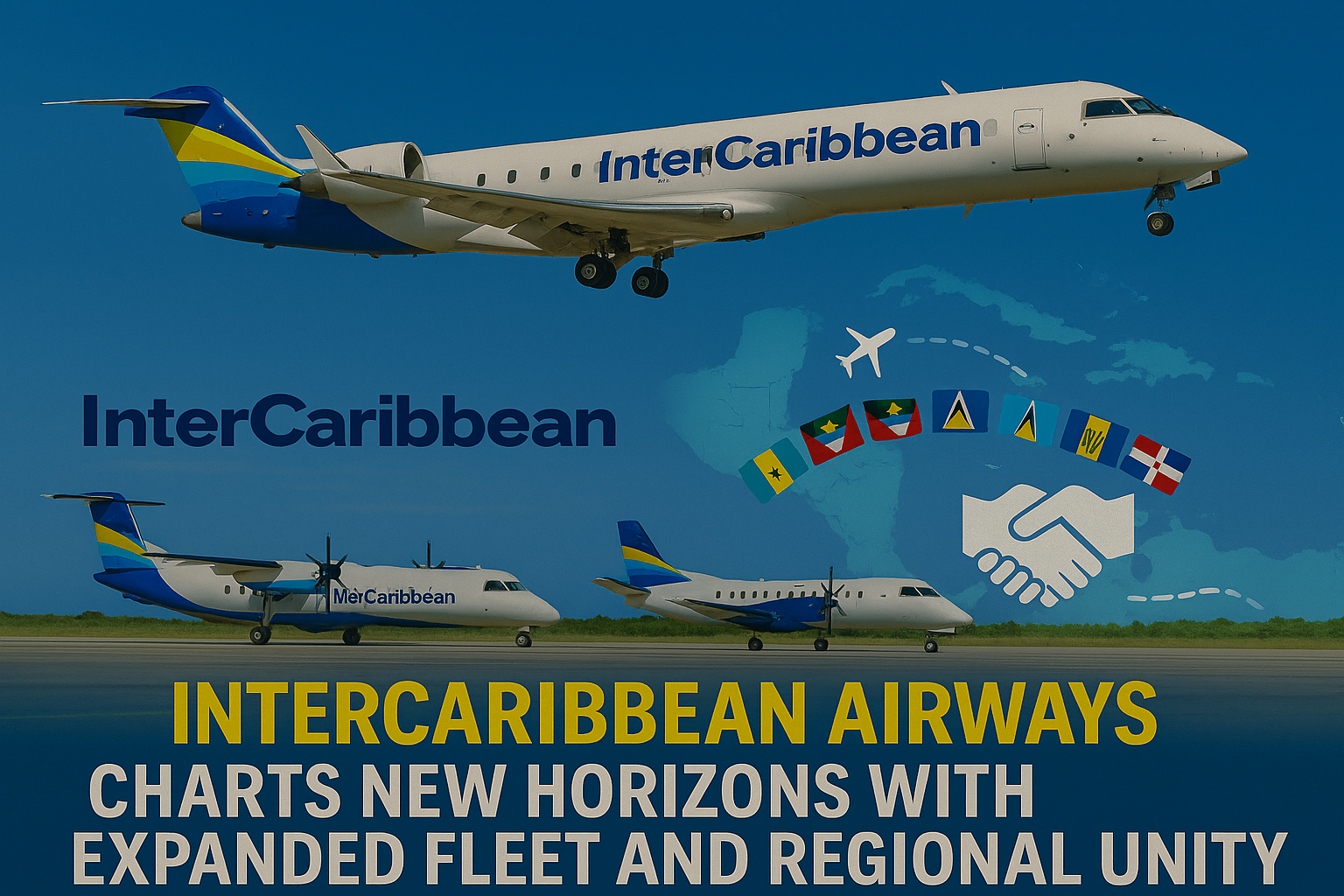At the 2025 Caribbean Travel Marketplace, Trevor Sadler, CEO of InterCaribbean Airways, unveiled a compelling vision for the airline’s future—one that blends bold expansion with a heartfelt commitment to regional connectivity and identity. With a fleet transformation well underway and ambitious new routes on the horizon, InterCaribbean is solidifying its role as a driving force behind the Caribbean’s economic and tourism integration.
Fleet Evolution: Bigger Planes, Bigger Reach
Sadler shared exciting updates on InterCaribbean’s evolving fleet strategy, highlighting the airline’s transition to ATR-42s and ATR-72s for improved regional efficiency. But the real headline-grabber is the purchase of eight Embraer 170s—a move that dramatically expands the airline’s capabilities.
“This new aircraft gives us double the range of the current Embraer 145,” said Sadler. “It opens the door to destinations across Central America, South America, and even North America.” With these aircraft, InterCaribbean is transforming from a regional connector into a transnational player—bridging not just islands, but entire continents.
Strategic Growth in Routes and Reach
While InterCaribbean continues to introduce new destinations—five more Caribbean islands are slated for service this year alone—Sadler acknowledged that network expansion must be deliberate. “Every island wants every service they can,” he explained, “but not every route is viable.” The airline takes a data-driven approach, balancing frequency, aircraft size, and demand to ensure sustainable growth.
The vision is clear: build dense connectivity across the Caribbean to stimulate travel, business, and tourism. “The more connectivity we create, the more demand follows,” Sadler emphasized. This strategy allows the airline to eventually increase flight frequency, offering travelers more flexible options across the region.
A Call for Caribbean-to-Caribbean Tourism
One of Sadler’s more pointed observations at the Marketplace was the lack of regional tourism promotion. “Every island is heavily marketing to the U.S., Canada, and Europe,” he noted, “but very little effort is spent encouraging Caribbean nationals to visit each other’s countries.”
InterCaribbean is actively working to change this narrative—not just through routes, but also through symbolic gestures that elevate Caribbean identity and pride.
The Spirit of the Caribbean: A Campaign in the Skies
One standout initiative is the airline’s tailfin campaign, in which aircraft are adorned with national flags and named “The Spirit of [Country].” The first plane celebrated Grenada, and the second honored St. Kitts and Nevis. These ceremonies have become deeply emotional events, with local leaders and citizens coming out to welcome planes that quite literally carry their flag.
“In St. Kitts and Nevis, the entire Parliament dissolved for the day to greet the plane,” Sadler recounted. “There were tears. These are proud moments for the people—and for us.”
With two more aircraft currently in the paint shop, this visual celebration of Caribbean unity will continue to spread across the skies in the weeks ahead.
A Future of Integration and Impact
As InterCaribbean Airways accelerates its growth beyond traditional boundaries, it remains grounded in its core mission: to connect the Caribbean, celebrate its people, and fuel regional development. Trevor Sadler’s leadership reflects a powerful blend of pragmatism and passion—building a future where air travel is not just about movement, but about meaningful connection.
Whether it’s bringing communities together, opening new economic corridors, or simply making it easier to experience the diversity of the Caribbean, InterCaribbean Airways is flying toward a future where every island—and every traveler—matters.





